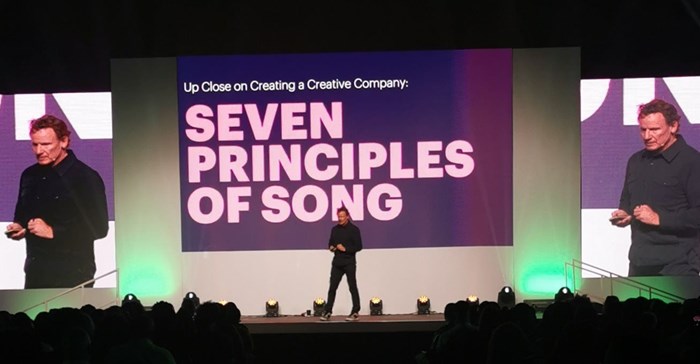Trending
#NedbankIMC2023: Accenture Song's Nick Law - Make advertising that delivers by tapping into the middle

“In the end, what we do as marketers is create customers. This is also what businesses do; you don’t have a business without a customer,” says Nick Law, creative chairperson of Accenture Song.
Law was in South Africa to present the global keynote at the Nedbank IMC Conference, which took place on Friday 15 September at the Urban Brew Studios in Randburg, Johannesburg.
Connecting customer experience with business impact
The problem he explains is that there is a cohort of people, who are very concerned about the business, its operations and efficiencies, but none of them are near the customer. “Then there are people who think about customers all the time but are not connected to the business.”
So, he says, you can see the problem, “Some businesses concentrate on business operations and do not understand how to create amazing customer experiences. And then there are creative agencies – you see them at Cannes - that create amazing customer experience but have no attachment to the business.”
While it might seem obvious he adds, “We need to connect customer experience with business impact.”
At the top are brand makers who make beautiful things that no one sees. At the bottom are performance marketers who make really ugly things that everyone sees
The problem lies in the middle
He believes marketing has lost its way because we have become an industry shaped like an hourglass.
“At the top are brand makers who make beautiful things that no one sees. At the bottom are performance marketers who make really ugly things that everyone sees. One is trying to make you feel something and the other to act on something, but neither is informed by what customers want which is the why. And the why lies in the middle, called mid-funnel, is what helps people to understand."
While companies are built in the shape of an hourglass, customers are shaped like onions. “They are making all their decisions in the middle, while we are making decisions according to third party aggregators."
Therefore, he says, we need to start from the middle and think about how we can get people to understand the value of these products, and services.
“Then we can inflect that up the funnel (to beautiful storytelling) and down (to more transactional stuff) and that’s when a brand delivers something that creates customers.
“As opposed to someone who says that brand is cool, but what do they sell, or I wish that brand would stop chasing me around the web just because I hovered on something on Instagram for two seconds too long.”
The middle is very simple
Looking specifically at marketing and advertising, he says we are losing brand longevity because we are not helping customers understand the value of the product.
“This is because we have vacated that place at the top of the funnel by doing big metaphorical brand stories which are meant to make you feel something, while at the bottom of the funnel, we are chasing you around the internet like a mad mathematician.”
Neither of these is informed unless you figure out the middle.
“The middle is very simple, it is not even purpose, it is how your product manifests that purpose. A company has to stand for something and that is to deliver a product that people want - that’s it.”
He adds that it is not enough to stand for something abstract.
“Unfortunately the legacy of above-the-line (ATL) agencies, which comes out of a media environment before there was any interface where the best you could hope for was for someone to feel something about your brand because they could not interact with it, continues,” he explains.
Then there is the opposite extreme. “To the other end, more recently the attempt to do performance marketing, with the illusion of precise tracking and reaching the right person at the right time, has been devoid of any craft or concept. As such, in the long term, your brand can suffer from what is considered performance marketing.”
Not designed to be simple
It is not an easy ask, he admits, saying that no brand is getting it completely right.
“That’s because everything changes so quickly but also because everything is connected. Fifty years ago, I was a consumer, I lived over there and interacted there. Today everything has converged into this one place (the mobile).”
Also, he adds, a lot of what we interact with now is not designed to be simple - and we keep adding layers through technologies which have accelerated complexity.
“These technologies are great, but not when we transfer our expertise onto the customer. We assume just because we have figured it out, they have as well. You need to strip away the complexity - think Apple, AirBnB and Google to some extent. If there is too much complexity, people just switch off.”























